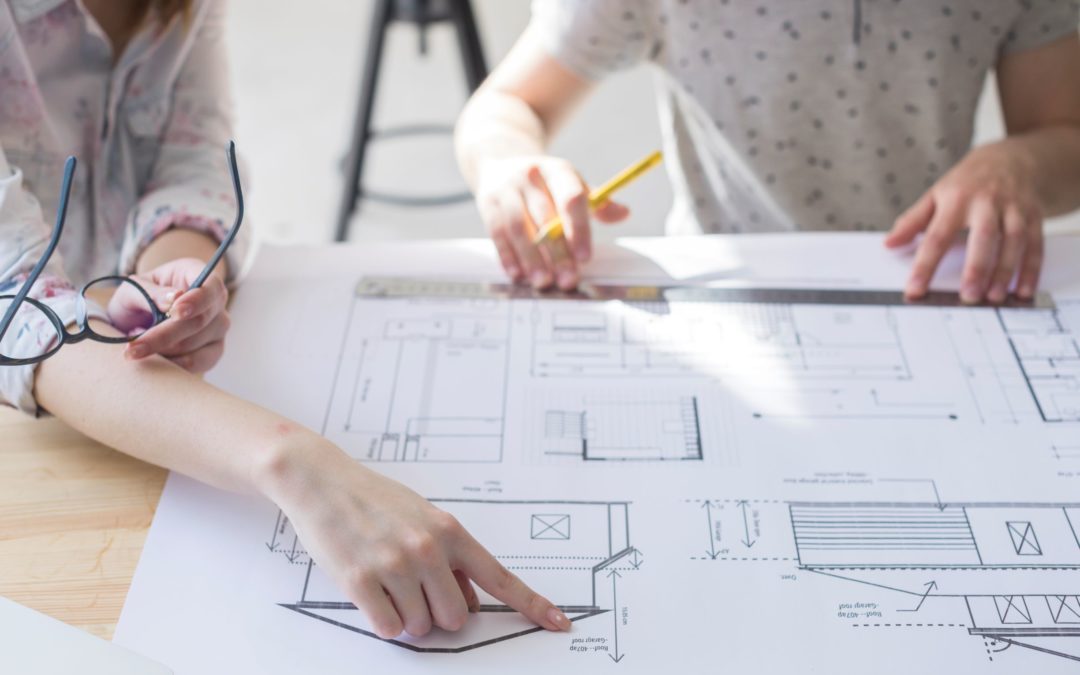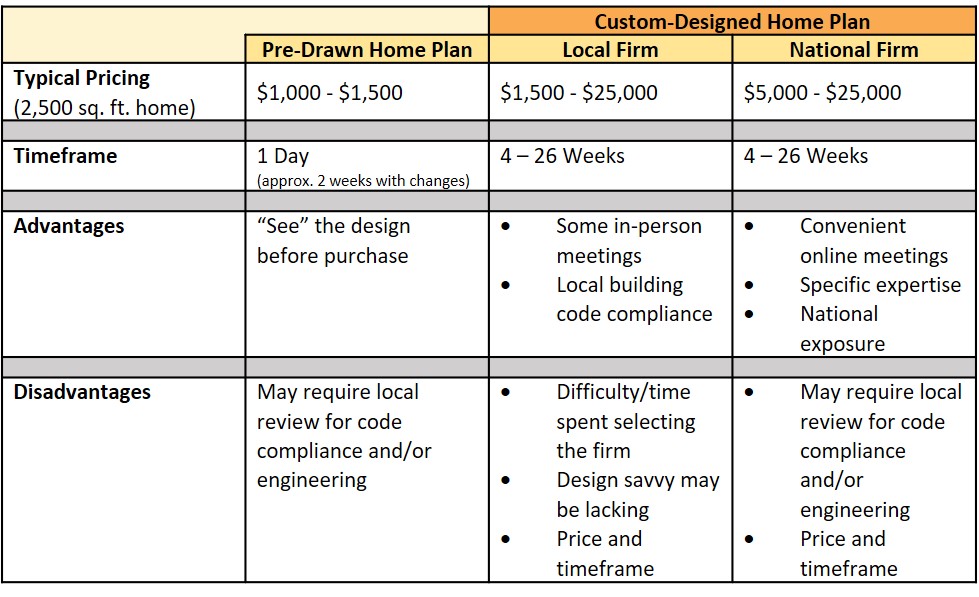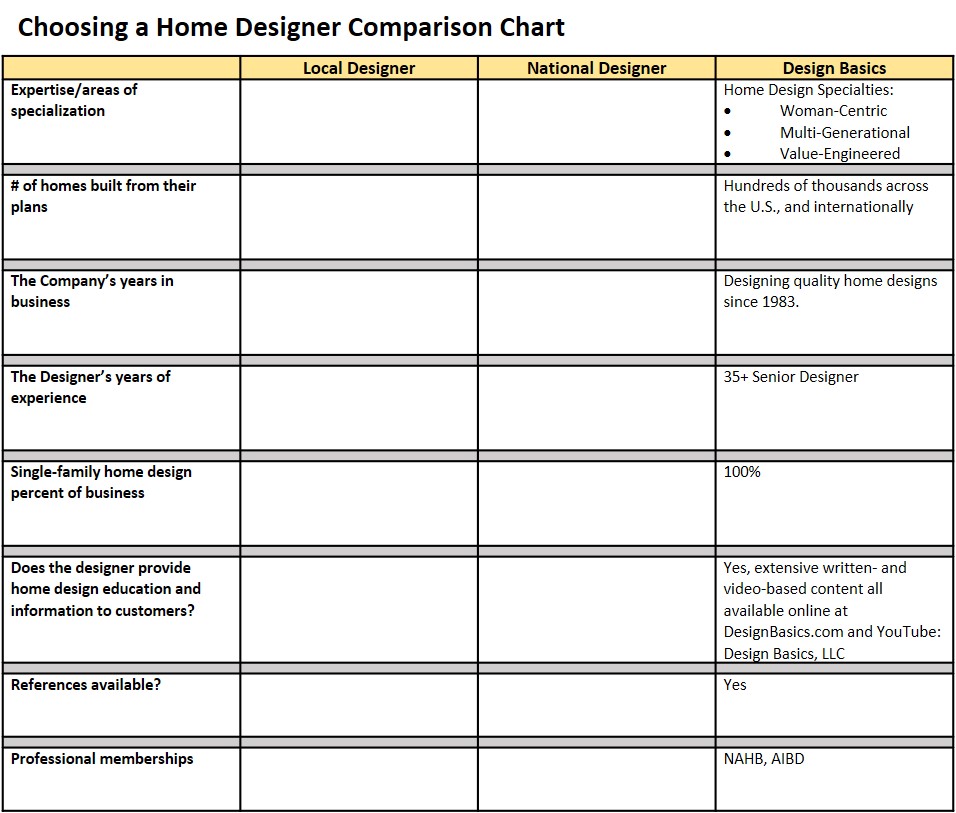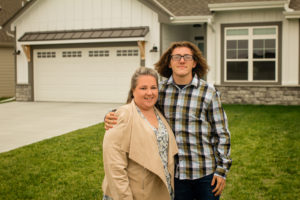
Custom Home Design Basics
When existing home plans, even with modifications, won’t work for you, it’s time for a custom-designed plan. Several options exist, each with its own benefits. You may be most comfortable working with a local designer across the table, face-to-face. Another advantage can be their knowledge of local building code requirements and plan compliance. And you may meet with your designer at your future homesite if you have a unique or challenging piece of ground. On the downside, local firms may not have the breadth of experience nor knowledge of the design features, amenities, and solutions that you would later regret not having had the opportunity to consider in your new home.
Choosing a national design firm means tapping into to their vast knowledge of design and innovative problem solving derived from their experience working all over the country. Your meetings will likely be online rather than in-person, but these can actually be more convenient than trying to coordinate numerous schedules.
Whereas a pre-drawn plan you can get within a few hours might run $1,000 - $1,500, custom home plan prices range from a low of about $.60 per square foot to as much as 3%-5% of your home’s price and may take a few weeks to a few months to develop. Expect design fees to loosely correlate with the quality of the designs, quality of the final construction drawings, the designer’s experience and creativity, and level of services included. Yes, you likely could save some money on plans by selecting the low-priced draftsperson/designer, but you may end up paying higher construction costs associated with a design, which is not as well-thought out. Simply, at the cheap end, such firms don’t pay high enough wages to attract accomplished design pros. You can expect design fees from talented designers to start about $2 per finished square foot.
Price will be one consideration when selecting your home designer. $1,250 for a pre-drawn plan equals ¼ of 1% of a $500,000 home. At $2/sq. ft., that 2500 sq. ft. home plan would cost $5,000, just 1% of the home’s price. Or a $15,000 plan – 3% of the home’s price – what’s the value of the ideal design, a home that lives the way you want, as compared to spending a little less, but having to live with regrets?
Yes, Her Home™ is published by Design Basics, and admittedly biased. Shaped by decades of customer feedback and input, our firm has been designed around what our customers want and value. There are many fine residential designers, we hope that you will contact us to design your new home!
The accompanying chart can help you think through some of the most important considerations when it comes to selecting who will design your new home. What is the designer’s reputation and what are they known for? How experienced are they with designing homes as compared to other structures? What information/education can they provide, equipping you to make wise, informed decisions and ultimately achieve the home you want AND the best value?
Download a PDF copy to use for your new home designer selection!
For more resources on thoughtful design and products:
- View other articles on our blog
- Browse our Her Home™ Magazine
- Thoughtful Design Concepts
Cover photo: <a href='https://www.freepik.com/photos/business'>Business photo created by freepik - www.freepik.com</a>



 Describe your responsibilities at Design Basics.
Describe your responsibilities at Design Basics. Tell us a little bit about yourself.
Tell us a little bit about yourself. 